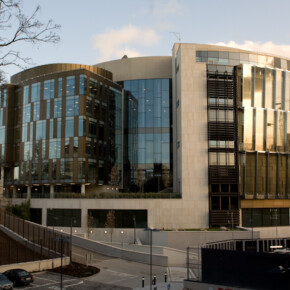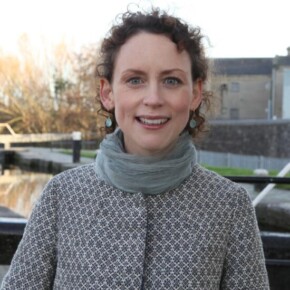Local insight into pretty Porto
Dublin People 15 Jan 2015Paulo Ranito, from Porto in Portugal, lived in Dublin for several years. He’s now back at home and has developed an app to help visitors to the city he grew up in. He tells Dublin People why it’s such a tourism gem.
HAVING been born in Oporto (Porto), it will be difficult for me not to say how great and extraordinary this city is.
However, I will try to be impartial and just tell, from my point of view as a local, what it is about Oporto that made it win last year’s award for Best European Destination (repeating the feat from 2012).
When a foreigner thinks about Oporto, the first thing that sometimes comes to mind is the Port Wine. Yes, we do have Port Wine and it’s one of the main iconic products of the city – but there’s much more to Oporto than just that.
So where to begin? Well, let’s start with the river. Its significance to the city is unquestionable and it helped to mould the hearts and minds of the people of Oporto throughout the ages.
During the Middle Ages some of the best shipyards of the Portuguese kingdom could be found on its shores and merchants from the city would trade their goods on the main commercial centres of northern Europe and the Mediterranean sea.
Trade was so important to Oporto that the king gave the city a unique privilege: no nobleman or man of high birth could stay in the city for more than three nights without the permission of the local council.
This prevented the women, left alone for long lengths of time, from falling into the hands of unscrupulous and powerful men who might want to tempt them!
Religion is also deeply embedded in the city’s DNA. For some centuries Oporto belonged to the local bishop and several kings had long quarrels with the Church, fighting for the important revenues generated from the taxes on trade.
Still today, it is hard to walk around the old part of the city without stumbling on a church, chapel or shrine.
The cathedral is the most imposing of them all, standing on the top of the main hill next to the river. But there are several others, some of which are somewhat hidden.
Sao Francisco Church is a precious gem. Its interior is considered a notable European examples of the baroque style, all covered by gilded wood.
Santa Clara Church is one of the best examples of hidden treasures, as its entrance is partially obscured by a narrow alley next to a stretch of the old medieval wall.
But this unique building is a baroque church hidden inside a gothic church. It’s definitely worth a visit.
Still on the subject of the baroque style constructions, I cannot forget the Clérigos Tower. It’s probably the most important monument for the local people, along with Luis I bridge. This baroque construction was for some time the tallest building in Portugal and it still is the highest bell tower in the country.
From the top it’s possible to have one of the best views of the old part of town.
One of the many things that can be spotted nearby is the Lello Bookshop, considered to be one of the most beautiful in the world.
It’s said that JK Rowling, who lived for some time in Oporto, was inspired here to develop some of her Harry Potter stories and ideas.
When it comes to food, Oporto is mainly known for two main dishes. The first, Francesinha, is a type of sandwich, but served on a plate as it contains gravy.
There are many different versions, but the most common is made with two thick slices of bread, roasted meat, several kinds of sausage, cured ham, and then covered with gravy and melted cheese.
Usually it’s served with French fries on the side, but its secret is always in the gravy. It is definitely not a light meal but is worth trying.
The other main dish is also a heavy meal, which is Tripas à Moda do Porto (Tripe Oporto Style). It’s served with beans and meat, with rice on the side.
Legend has it that during the Age of Discoveries the people from Oporto gave all the meat to the caravels who went to conquer the city of Ceuta, keeping only the offal for themselves.
Ingenuity gave birth to Tripas à Moda do Porto. Its importance to the people is such that the informal nickname for people born in Oporto is
‘tripeiros’.
There is much, much more to experience in Oporto and I invite you to try it.
All the information needed can be found in Oporto Insight, a new app, completely free, available for iOS and Android. It can be downloaded from www.oportoinsight.com, at Google Play or from the Apple App Store.
?¢ Oporto Insight was developed by Paulo Ranito, his wife Marta and a small team of Oporto enthusiasts and experts from the city (see below).
Dublin’s role in promoting Porto as tourist destination
OUR story begins like those of so many other emigrants who decided to move to Ireland, with a fearful thought crossing our minds: what is waiting for us on the Emerald Island?
We had been offered the opportunity of developing a professional career in Dublin, but knew little about Ireland.
Our knowledge was limited to Guinness and its most famous stereotype – a land of green pastures where sheep would quietly graze. How mistaken we were.
Having lived all our lives in Oporto, which has a population of around 250,000, we thought moving to Dublin would not be much of a change, even if it was Ireland’s capital.
But nothing could have prepared us for the fast-paced lifestyle of modern Dublin.
It was interesting to see that Dublin was able to adapt to the enormous flow of emigrants who went to try their luck with the Celtic Tiger, while still proudly preserving its own cultural integrity and identity.
There were constant events for all shapes and sizes and it was common to see locals attending fairs, concerts and exhibitions, no matter if they were foreign or Irish themed.
Irish people are thirsty for new things and they would ask me and my wife not only about Algarve – the southernmost part of the country, famous for its sunny beaches – but also about Portuguese history, food and traditions.
Aside from the obvious cultural differences, there was one attitude towards Irish heritage that caught our eye. We felt that like Oporto, Dublin had attributes that were interesting to tourists. But we were amazed with the excellent marketing that exists around the concept of Ireland and Dublin.
How was it possible that a city that has no Eiffel Tower, Brandenburg Gate or world-renowned museums had so many tourists? And it rains constantly, for Christ’s sake!
What motivated tourists from all around the world to visit a country where they had to use raincoats and umbrellas during their vacations? It did not make any sense. We then understood that Irish tourism had been perfectly developed, presenting the country’s heritage as something worth visiting.
From the Book of Kells and Ireland’s four literature Nobel prize laureates, to the pubs and Irish music, Irish tourism projects, in a word, uniqueness.
We thought to ourselves that Oporto also had several characteristics that made it unique. So why did it not have such visibility in the international tourism markets?
Upon our return to Oporto, after spending three years in Ireland, we tried to emulate the Irish concept. We would not reinvent the wheel and we could not do it just by ourselves. But by creating an app, called Oporto Insight, we believe we are doing our city some well-deserved justice.
The app features our city’s monuments, architecture and traditional food, as well as providing comments from local celebrities, some of whom are recognisable throughout the world, not only within their areas of expertise but also by the general public.
We hope the app entices anyone who uses it to visit Oporto. We will appreciate your visit and you’ll find a warm welcome here. Go raibh maith agat!











